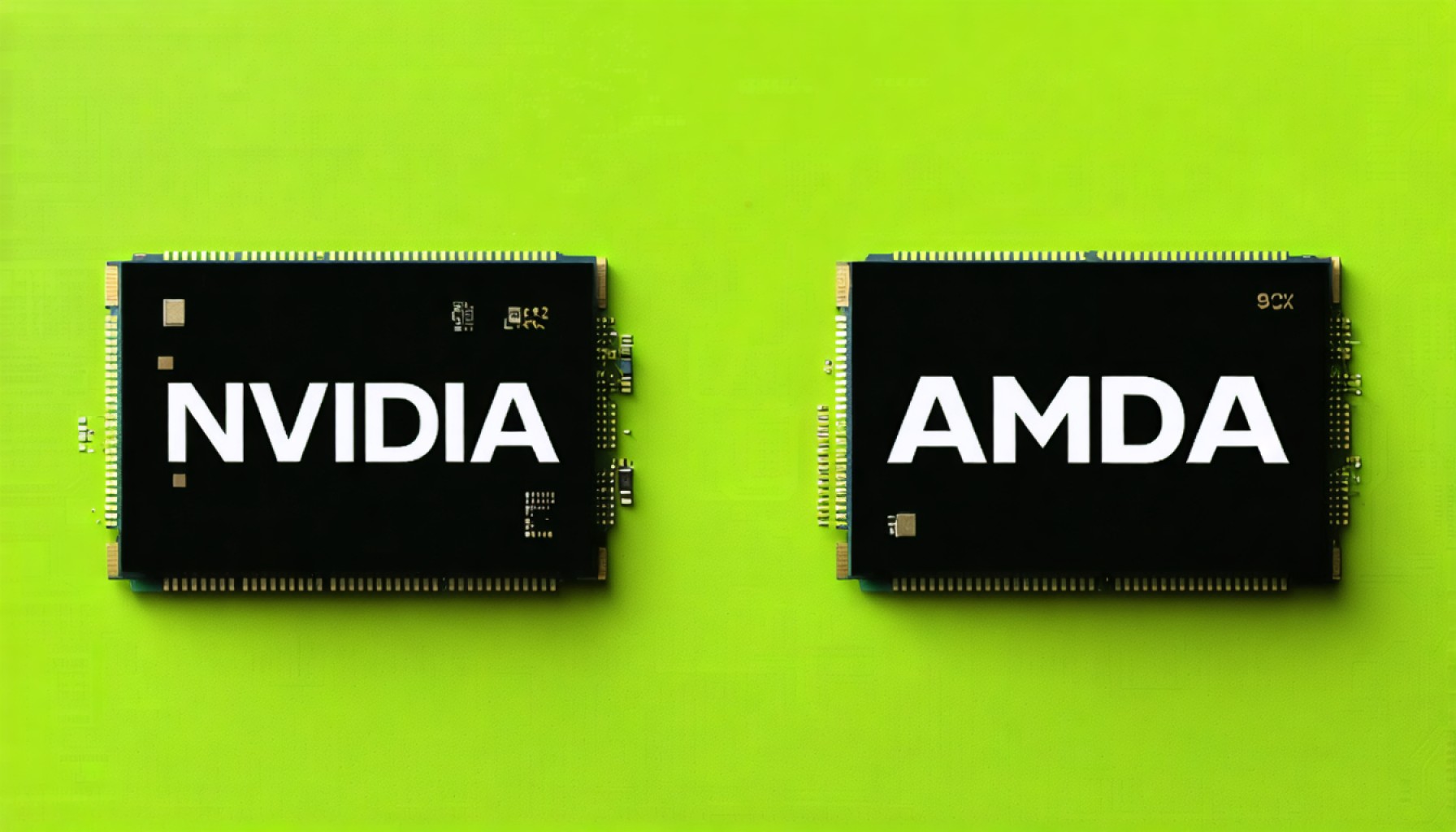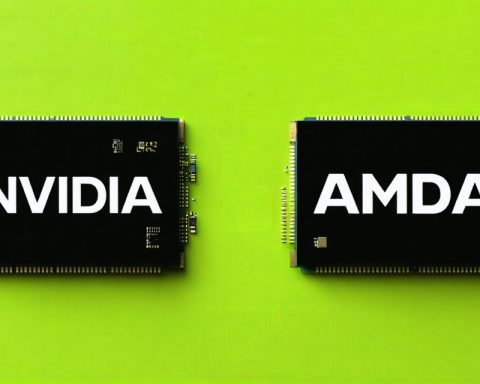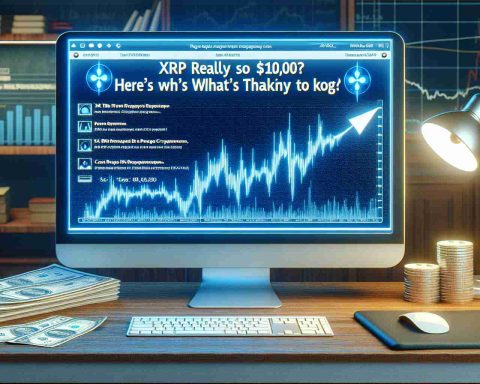- The NVIDIA GeForce RTX 5070 Ti launch faced severe supply shortages, frustrating tech enthusiasts and retailers.
- Initial pricing was set at $749, but demand-driven inflation has pushed average consumer prices to $950.
- Supply is critically low, with some U.S. retailers obtaining fewer than ten units, similar in scarcity to the RTX 5090.
- There is no immediate resolution, though increased supply is speculated by March amidst ongoing logistical challenges.
- AMD plans to release the RDNA 4-based Radeon RX 9070 XT at $599, promising better stock availability than NVIDIA.
- AMD’s strategic pricing and supply could challenge NVIDIA, potentially reshaping the GPU market dynamics.
- Effective supply chain management and competitive pricing might outweigh innovation in the race for gaming market dominance.
The launch of NVIDIA’s GeForce RTX 5070 Ti has left tech enthusiasts in a whirlwind of frustration, as severe supply shortages have rocked the market. The anticipation surrounding this GPU quickly turned into a scramble, with some U.S. retailers barely securing ten units for the eager masses. Despite an original price tag set at $749, consumers find themselves shelling out an average of $950, a stark reflection of demand-driven inflation.
Picture this: a store with empty display shelves where shiny new RTX 5070 Tis should have been. It’s both a retailer’s nightmare and a gamer’s despair. The scarcity rivals the notoriously scarce RTX 5090, casting a shadow over NVIDIA’s launch strategy. Whispers of increased supply by March float around retailers, though skepticism remains high amid ongoing logistical tangles.
Amidst this chaos, a golden opportunity unfurls for AMD. The imminent arrival of their RDNA 4-based Radeon RX 9070 XT, strategically placed at an enticing $599, promises to rewrite the rules of the GPU battleground. With AMD aiming to launch with better stock availability than NVIDIA, gamers may soon find their salvation in crimson and gold hues. AMD’s strategy could reinvigorate their market share, offering NVIDIA a run for its silicon.
As NVIDIA grapples with its inventory dilemmas, AMD stands poised to capitalize, potentially reshaping the gaming landscape one graphic card at a time. The looming question resonates: will AMD seize this moment to outplay NVIDIA in the race for gaming supremacy? In this high-stakes game of tech giants, supply chain mastery and competitive pricing might just trump innovation.
Will AMD Finally Seize Control of the GPU Market? An Insider’s Perspective
NVIDIA’s Supply Woes: How-To Cope and Find Alternatives
NVIDIA’s recent launch of the GeForce RTX 5070 Ti has highlighted severe supply chain issues, with shortages leading to inflated prices far above the MSRP. Here’s how tech enthusiasts can better navigate this landscape:
1. Set Price Alerts: Use tools like Honey or Keepa to get notifications when prices drop to MSRP levels on major retail websites.
2. Consider Pre-Owned or Refurbished Options: Reputable sellers often offer refurbished models, which can still have excellent performance at a reduced price.
3. Explore Geographic Alternatives: Sometimes, availability can vary significantly between regions. Exploring international purchase options, where feasible, might allow for better pricing.
4. Join Gaming Communities: Engage with forums like Reddit’s r/buildapc for real-time updates on GPU stock levels.
Real-World Use Cases and Market Trends
The RTX 5070 Ti is designed for higher-end gaming and creative work, supporting advancements in ray tracing and AI-driven tasks. However, due to its scarcity, various market shifts are anticipated:
– Rise of Budget Alternatives: Lower-tier GPUs may see increased demand as gamers compromise on specs for availability and pricing.
– Shift Toward Cloud Gaming: Services like NVIDIA GeForce Now or Google Stadia could attract users unable to secure physical hardware, reflecting a temporary shift in consumer behavior.
Industry Comparison: NVIDIA vs. AMD
– AMD’s Radeon RX 9070 XT is entering the market at $599, which is $150 less than NVIDIA’s planned price, making it a formidable competitor. Historically, AMD has boasted strong performance-per-dollar ratios, making them formidable rivals when stock levels align with demand.
– Performance Benchmarking: With better stock, AMD’s latest models might not only fill the gap but might outperform similar NVIDIA offerings, particularly in terms of price efficiency.
Forecasts and Predictions
– Market Stabilization by Q2 2024: Industry experts anticipate that NVIDIA’s supply issues may ease by mid-2024 as manufacturing and logistics recover, a scenario supported by Gartner’s supply chain analysis reports.
– Increased Competition and Consumer Benefits: As AMD potentially secures higher market shares, competitive pricing and diverse options could benefit consumers looking for affordable high-performance GPUs.
Controversies and Limitations
– NVIDIA’s Approach: There’s criticism regarding NVIDIA’s allocation method and marketing strategies, which seem to prioritize hype over availability.
– Environmental Impact: Heavy demand for semiconductor manufacturing highlights sustainability concerns, pivotal in shaping future buyer decisions and influencing market trends.
Security & Sustainability
– NVIDIA vs. AMD: Both companies are working towards more energy-efficient products. The TSMC 3nm process, to be adopted in both Nvidia and AMD future GPUs, focuses on reduced energy consumption per watt of computing power.
Actionable Tips
– Explore Open-Box Deals: Retailers like Best Buy often restock returned items that are essentially new for a reduced price.
– Patience as a Strategy: Consider waiting for possible price normalizations by mid-next year as supply chain issues are addressed.
Related Links
As AMD capitalizes on this opportunity, keeping a close eye on upcoming releases and market shifts remains crucial. Stay informed, stay strategic, and leverage community insights for the best GPU strategies in today’s fluctuating tech marketplace.














